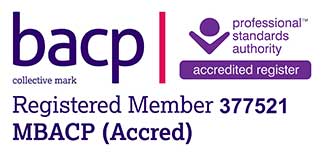Supervision & Group Therapy
Two or more people form a ‘supervisory alliance’ with shared objectives about how to work together constructively to provide a safe, ethical and competent service to clients
Good Practice in Action 054: Introduction to Supervision in the counselling professions, BACP
If you are interested in finding out more about having supervision with me, please get in touch. I am interested in offering supervision for groups to organisations. More details of the supervision models I use are at the bottom of the page.
I mainly use Hawkins and Shohet’s Seven-Eyed Model and Inskipp & Proctor’s Cyclical Model, but I also like Norman Kagan’s Interpersonal Process Recall and Petruska Clarkson’s 5 Relational Levels. I integrate the psychodynamic by observing transference and counter-transference between client/supervisee/supervisor.
GROUP THERAPY
TBC Starting in January 2026
Summary of main supervision models:
Inskipp & Proctor’s model focuses on the Normative, Formative, Restorative Tasks.
| Task | Areas covered in this task | Goals for the Practitioner: |
| Normative | Ethics, Standards, Safeguards, Contracting, Boundaries | Ethical |
| Formative | Educative, Practice Development, Sharing Ideas, Process | Competence |
| Restorative | Laughter, fun, play, creativity, space to explore | Confidence and Creativity |
Hawkins and Shohet’s Seven-Eyed Model
Explores seven areas, including:
| Seven Eyes | Detailed explanation | |
| 1 | Client | What and how they present |
| 2 | Therapist/supervisee | Exploration of the strategies and interventions used by the supervisee |
| 3 | Client-Therapist relationship | The relationship between the client and the supervisee, including transference |
| 4 | Supervisee | Therapist’s thoughts, feelings, reactions, including countertransference |
| 5 | Supervisor-therapist relationship | What’s happening between them |
| 6 | Supervisor’s reflections | The supervisor focusing on their own process, including fantasy supervisor/client relationship |
| 7 | Wider systemic context | Focus on the wider contexts in which the work happens; the client, therapist or supervisor’s context, the organisational context of any member, the wider world. |
Qualifications:
Level 7 Supervision certificate with Kathy Raffles Supervision Training in Bridgwater 2025.
Foundation Certificate in Group Analysis, via Institute of Group Analysis, Turvey. 2023
References:
- Inskipp & Proctor Becoming a Supervisor (1995)
- Hawkins & Shohet Supervision in the Helping Professions (2006)
- Norman Kagan Interpersonal process recall: A method of influencing human interaction (1976)
- Petruska Clarkson The Therapeutic Relationship (2003)

Sally Davies
MBACP (Accredited)
PGDip Integrative Counselling
